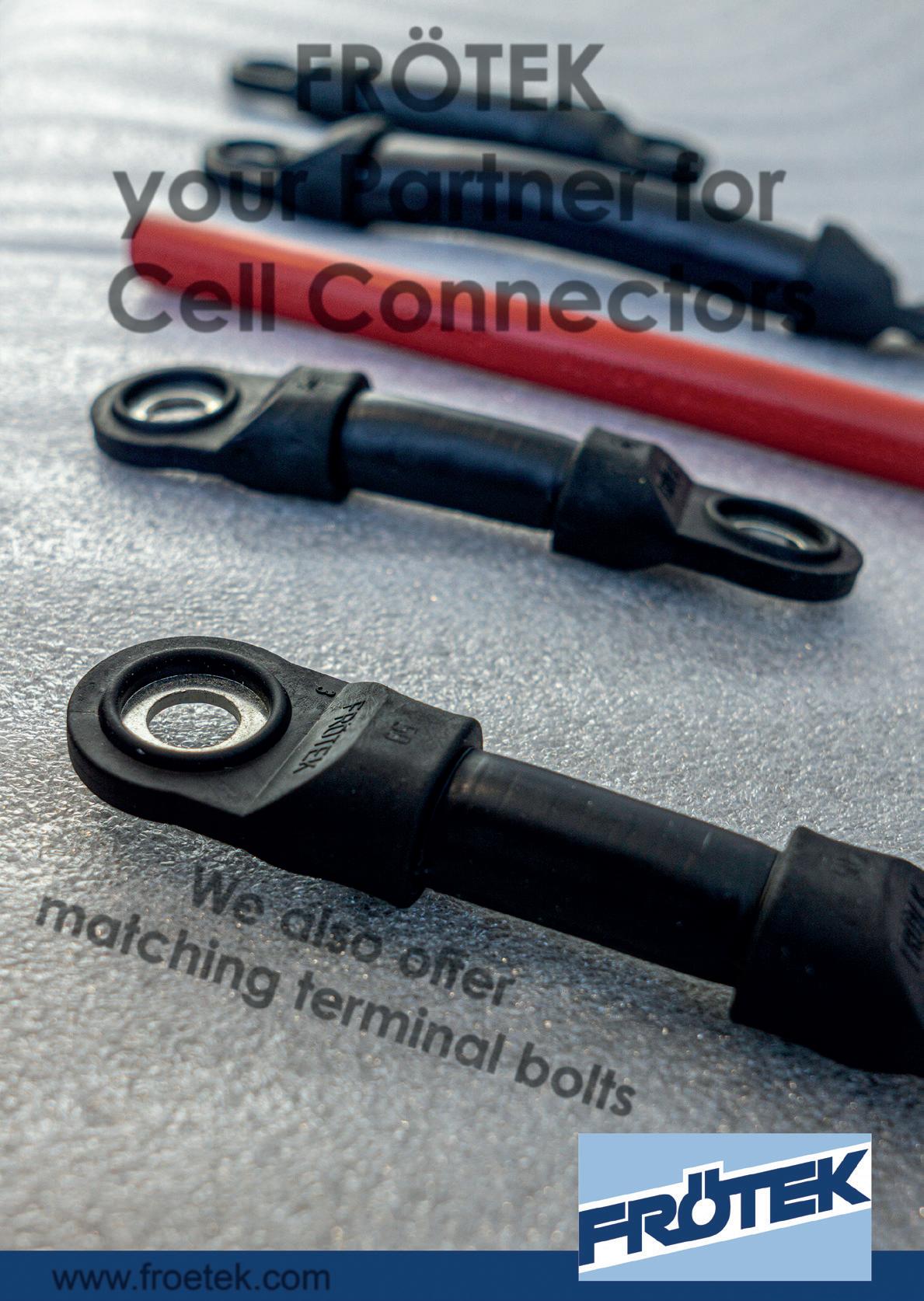
4 minute read
We also offer matching terminal bolts

working as a research scientist at MIT’s Lincoln Laboratory where he had been part of an interdisciplinary team that developed the first random-access memory (RHM) for the digital computer.
His fundamental research had focused on magnetism and on the metal–insulator transition behaviour in transitionmetal oxides. He also developed a set of semi-empirical rules to predict magnetism in these materials in the 1950s and 1960s, now called the Goodenough–Kanamori rules which is a core property for high-temperature superconductivity.
Goodenough’s contribution was to the development of the ferrimagnetic, ceramic memory element, a contribution that put him in charge of a ceramics laboratory and that gave him a decade in which to explore the magnetic, transport, and structural properties of transition-metal compounds.
MIT Lincoln Laboratory
In 1952, he joined the group at MIT Lincoln Laboratory charged with the development of a ferrimagnetic ceramic to enable the first random-access memory (RAM) for the digital computer.
“The air defence of this country depended on having a large digital computer, and the computer had no memory!” Goodenough later said.
“The rolled alloy tapes first tried did not switch fast enough. Although the Europeans who had developed ferrimagnetic spinels were convinced that it would be impossible to obtain the required squarish B-H hysteresis loop in a polycrystalline ceramic, the magneticcore RAM was delivered within three years of my arrival with a read/rewrite cycle time of less than the required six microseconds.”
In the course of this work, Goodenough showed how cooperative orbital ordering gives rise to crystal distortions, and he used this ordering to articulate the rules for the sign of the spin-spin magnetic interactions in solids.
These rules have subsequently provided a true guide to the design as well as the interpretation of the magnetic properties of solids; they are known as the Goodenough-Kanamori rules, and they inspired the title of Goodenough’s first book, Magnetism and the Chemical Bond.

Although these were astounding advances in both physics and chemistry. It was his appointment to Oxford University in 1976 that so much came together.
Once there, Goodenough recognized that the layered sulfides would not give the voltage needed to compete with batteries using a conventional aqueous electrolyte, but that an oxide would provide a significantly higher voltage.

From previous work, he knew that layered oxides analogous to the layered sulfides would not be stable, but that discharged LiMO2 oxides could have the same structural architecture as discharged LiTiS2
Goodenough assigned a visiting physicist from Japan, Koichi Mizushima, the task of working with Goodenough’s postdoc, Philip Wiseman, and a student, Philip Jones, to explore how much Li could be extracted reversibly from layered LiMO2 cathodes, and with M = Co and Ni he found he could extract electrochemically over 50% of the Li at a voltage of around 4.0V versus a lithium anode, nearly double that for the sulfides, before the oxides began to evolve oxygen.
Their groundbreaking findings with Li1-xCoO2 were published in the Materials Research Bulletin 15, 783-789, (1980).
The report concluded with the statement, “Further characteristics of the intrinsic and extrinsic properties of this new system are being made.”
However, when Goodenough went to patent his cathodes, no battery company in the UK, Europe, or the US was interested in assembling a battery with a discharged cathode, so he gave the patent to the AERE Harwell Laboratory.
Nevertheless, with his postdoc Peter Bruce, now a professor in St Andrews, Scotland, and a new student, MGSK Thomas, Goodenough continued in Oxford to demonstrate that the Li+-ion mobility in Li1-xCoO2 is even higher than that in the sulfide cathode LiTiS2.
The wireless revolution
This finding meant that a Li1-xCoO2 cathode would provide the needed voltages and rates that would usher in what was later termed the “wireless revolution”.
Meanwhile, Rachid Yazami in Switzerland, exploring Li insertion into graphite, reported that a discharged graphite anode did not have a problem with dendrites if the carbon/LiCoO2 cells were not charged too rapidly, and Akira Yoshino in Japan then assembled the discharged cell Carbon/LiCoO2 to demonstrate the Li-ion battery that was licensed to the SONY Corporation, which marketed with it the first cell telephone.
Today, almost everyone from five years upwards has an application of this battery in his or her pockets.


Michael Thackeray was working on the Zebra battery (see Batteries International passim), a modification of the sodium-sulfur battery, in South Africa when he read the article in the Materials Research Bulletin. He immediately applied for a sabbatical to work with Goodenough in Oxford.

He came to the city with the announcement that he was inserting Li reversibly into magnetite, the ferrimagnetic spinel Fe3O4 used by Greek sailors in an early version of the compass. He wished to replace cobalt, which is expensive and toxic, with iron, which is abundant and benign. The spinels A[B2]O4 contain a threedimensional framework of BO6/3 octahedra sharing edges; in the layered LiMO2 oxides they form 2-dimensional layers.
Spinel memory
The A atoms of a spinel occupy interstitial tetrahedral sites that are bridged by empty, face-sharing octahedra, and Goodenough realized from his earlier work on spinel memory elements that the Li inserted into Fe[Fe2]O4 was entering and displacing that interstitial A-site Fe into the bridging interstitial octahedral sites to create a rock-salt structure with the [Fe2]O4 framework remaining intact.
Bill David, at the Rutherford Laboratory, had just joined Goodenough’s group from the Clarendon with a PhD involving structural analysis, so he and Thackeray demonstrated that Goodenough’s hypothesis was correct.
Meanwhile, Goodenough told Thackeray to investigate the electrochemical reversible insertion of Li into the spinel Li[Mn2]O4; it gave a voltage of 3.0V versus lithium. Manganese is also abundant and benign.
On his return to South Africa, Thackeray showed his students that extraction of Li from Li[Mn2]O4 gives a voltage of 4.0 V versus lithium. A modification of the Li1-x[Mn2]O4 spinel cathode was later used by Nissan to power their Leaf electric car.
By then the next stage in the development of the lithium battery was complete. Akira Yoshino in 1985 fabricated the first prototype of the LIB and received the basic patent. This configuration was commercialized by Sony in 1991 and by A&T Battery in 1992.
“It’s rare that we’ll see a figure like John Goodenough again in our lifetimes,” said one commentator. “He had a life of modest and quiet achievement — a well lived life and with a legacy that the whole planet can thank him for.”

















